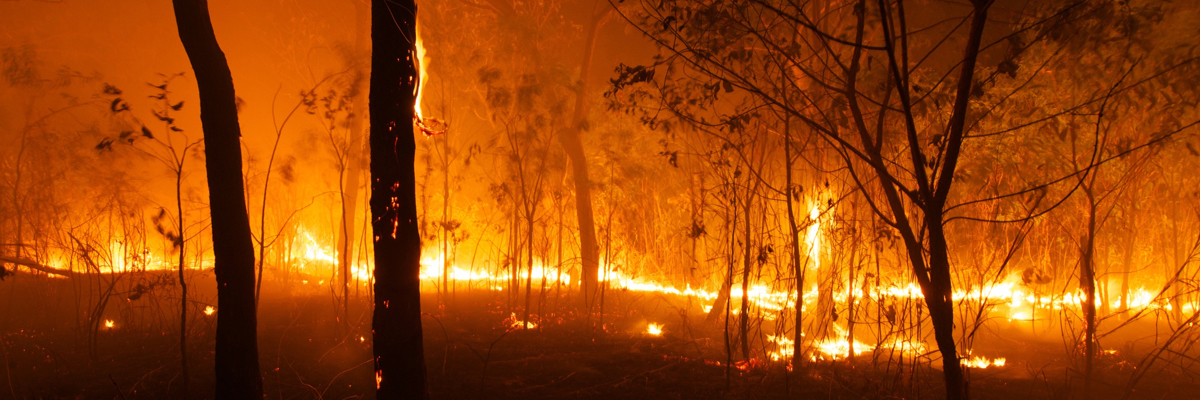Debunking BAL Reports: An Overview to Recognizing Your Property's Bushfire Risk
Debunking BAL Reports: An Overview to Recognizing Your Property's Bushfire Risk
Blog Article
How BAL Report Impacts Shrub Fire Security Actions
In the realm of bush fire protection, the Building Attack Degree (BAL) report stands as a critical tool that dramatically influences the safety and resilience of homes in fire-prone locations - BAL Report. The influence of a BAL assessment extends far past mere documents; it serves as the foundation for identifying the ideal building and construction standards and fire defense procedures needed to reduce the risks presented by bushfires. As areas grapple with progressively serious fire periods, understanding how the BAL record shapes these protective procedures comes to be paramount for policymakers, building contractors, and house owners alike
Understanding the Bushfire Attack Degree

Value of BAL Report Evaluation

In Addition, the BAL report analysis acts as a foundational action in abiding by lawful commitments and needs associated with bushfire defense. Neighborhood councils and authorities usually mandate the submission of a BAL report as component of the planning and building authorization process to make certain that residential properties are adequately secured against bushfire risks. Failing to conduct a complete BAL report analysis can result in inadequate defense actions, leaving properties susceptible to ravaging bushfire incidents.
Building And Construction Standards Based Upon BAL
A comprehensive understanding of the Bushfire Strike Degree (BAL) enables homeowner to apply building and construction requirements customized to their details danger profile. Construction criteria based on BAL are essential in mitigating the influence of bushfires on homes. The BAL rating classifies the prospective risk a building deals with during a bushfire on a range from BAL-Low to BAL-FZ (Fire Zone) Each BAL degree corresponds to specific building and construction demands outlined in the Australian Typical AS3959-2018 Building of Structures in Bushfire-Prone Areas. For circumstances, residential properties classified as BAL-Low might only need fundamental steps such as clearing particles and maintaining gardens, while those in higher BAL categories need even more durable procedures like coal displays, fire-resistant materials, and secured home windows. Adhering to these construction criteria not just boosts the architectural durability of the home but additionally improves the total security of residents throughout a bushfire event. For that reason, homeowner need to thoroughly consider their BAL ranking and adhere to the matching building and construction requirements to appropriately protect their owners and homes.
Carrying Out Fire Protection Measures
With the structure of building and construction criteria based upon Bushfire Attack Degree (BAL) in location, the emphasis now shifts in the direction of the useful implementation of fire defense procedures to fortify buildings against bushfire threats. Applying fire security steps includes a combination of passive and active approaches to improve the durability of buildings in bushfire-prone locations. Passive measures consist of using fireproof building products, setting up coal guards on vents, sealing gaps in roofs and wall surfaces, and maintaining a clear room around the residential property devoid of combustible useful reference vegetation. Energetic procedures encompass having firefighting equipment easily available, such as pipes and water pumps, as well as developing a defendable room around the residential property by removing greenery and having a well-maintained yard. Furthermore, developing an emptying strategy and guaranteeing all citizens recognize emergency situation procedures are vital components of efficient fire protection steps. By incorporating both passive and energetic strategies, homes can considerably decrease their vulnerability to bushfire cases and raise the safety and security of residents.
Shielding Homes Versus Bushfires
Successfully securing homes versus the destructive influences of bushfires requires a proactive and detailed method to fire defense steps. Homeowners residing in bushfire-prone locations have to focus on the execution of numerous strategies to improve their residential property's resilience against wildfires. One essential facet is creating a defensible area around the home by preserving a clear area devoid of flammable products. This consists of frequently cutting greenery, eliminating dead plants, and ensuring a secure range between structures and trees. Setting up fireproof roof covering products can also considerably minimize the danger of coal strikes and straight fire contact. Additionally, sealing vents and spaces to stop coal invasion, in addition to integrating fireproof windows and doors, can aid strengthen the home's protection versus bushfires. Spending in a reliable water source, such as a well-maintained automatic sprinkler or a specialized water container, is vital for providing water throughout fire emergencies - BAL Report. By accepting an aggressive stance and integrating these protective actions, property owners can considerably raise their chances of protecting their homes versus bushfires.
Conclusion
In conclusion, the Bushfire Attack Degree (BAL) record plays a crucial function in figuring out the essential check my blog defense procedures against bushfires. Implementing fire protection procedures based on the BAL report is vital in guarding residential properties from potential bushfire risks.
In examining bushfire danger to properties, comprehending the Bushfire Strike Level (BAL) is an important part for implementing reliable protection measures. In general, a clear understanding of the Bushfire Attack Level is essential for applying appropriate defense actions and minimizing the impact of bushfires on homes.

Report this page